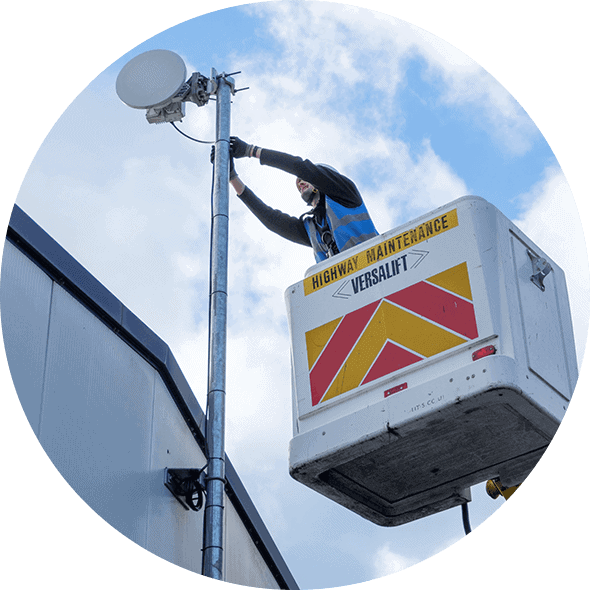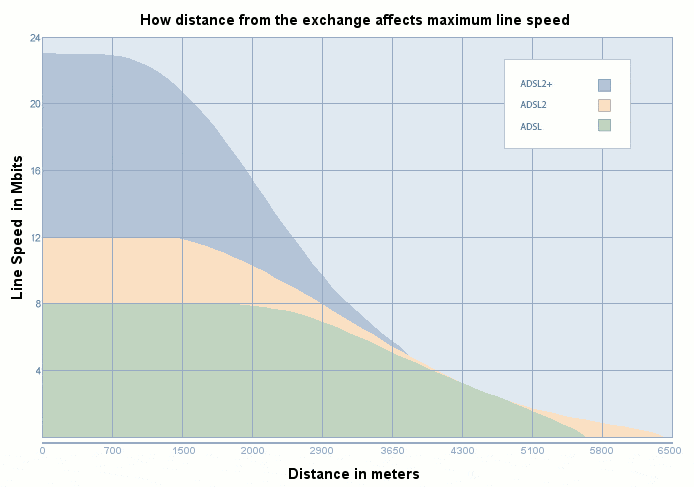If you live in a rural area, you’re very lucky in some respects. Unfortunately, you’re unlucky when it comes to your broadband options and choice of internet service providers.
Rural areas have always been left behind when it comes to broadband technology advancements. However, there are an increasing number of broadband options available to people living in rural areas. One such option is fixed wireless. But is fixed wireless better than the DSL connection already available to you?
Is fixed wireless better than DSL? Yes, fixed wireless is better than DSL. Fixed wireless connections are faster and are more reliable. You also don’t require a physical line so the cost could be lower.
DSL and fixed wireless are very different. While fixed wireless is better than DSL, I’m going to explain why by comparing the two on several important points. And while fixed wireless is better, that doesn’t mean it’s the best option for you and your business. I’ll explain why.
Fixed Wireless Internet & DSL: Which Best Suits Your Needs?
If you’re living outside of a major city in America, Canada or the UK, fixed wireless internet and DSL may be the only two broadband technologies available to your business or home. Which of these broadband technologies best meets your needs? I’m going to compare the two technologies here, which should help you to decide which will meet your requirements.
To decide which type of broadband will better suit your requirements, there are multiple factors that we need to take a look at:
- Price
- Availability
- Speeds
- Reliability
Price
As with any service for your business or household, price is an important consideration when choosing broadband. Here’s a look at not only how much DSL and fixed wireless cost monthly, but how much they cost to set up.

The upfront cost of a fixed wireless connection is usually more than the upfront cost of a DSL connection. Fixed wireless technology can be expensive. Furthermore, a telecommunications technician will need to install the technology at your property and configure it. That’s not to mention the time taken up by the surveying necessary to ensure a reliable connection can be established.
With DSL connections, pretty much all of the technology is already installed. To create a DSL connection, broadband runs over your existing copper telephone line. Therefore if you already have a telephone line, nothing needs to be installed. You may still have to purchase a router and a switch, but the setup cost will be significantly lower than setting up a fixed wireless connection.
So, fixed wireless is usually more expensive to set up. How does the monthly cost of the two broadband products compare?
The monthly cost of a fixed wireless connection will differ primarily based on the speeds that you want. While you don’t pick your speeds with a DSL connection, you do with a fixed wireless broadband product. In general, fixed wireless will cost more monthly than DSL. Why does fixed wireless cost more than DSL?
Fixed wireless is much faster and more reliable than DSL. When it comes to broadband, you really pay for what you get. If you want poor speeds with questionable reliability, go for the cheaper solution. If you need good speeds and reliability guarantees, you end up paying a little more. And that’s why fixed wireless normally costs more monthly than DSL does.
There are several types of fixed wireless. You can have a contended option without any kind of speed guarantees. Providers usually offer this for around £65 per month. With this contended option, you would have speeds equivalent to FTTC. There are many providers out there that will provide guaranteed speeds more akin to a leased line. For guaranteed superfast speeds, you’ll pay around £145 per month upwards depending on the bandwidth that you need.
Availability
As you’re undoubtedly aware, there’s a limited number of broadband solutions available to businesses and homes in rural areas. DSL and fixed wireless are two broadband technologies available in rural areas, but how does availability compare?
According to High Speed Internet, DSL internet is available to 84% of the US population. DSL internet tends to be available in the majority of rural US locations, so the likelihood is this product is available to you. ADSL, the most common form of DSL in the UK, is available to approximately 99% of the UK’s population. Again, this suggests that ADSL is a broadband option available to the vast majority of people living in rural areas.
Moving onto the availability of fixed wireless, it’s hard to say how widely available fixed wireless actually is in the UK and America. There are differing figures for both countries, so it’s difficult to say how much coverage providers offer. We can safely presume that fixed wireless availability is lower than DSL/ADSL availability. However, it’s hard to give a percentage that gives us a really good idea of how limited availability is.
There are many more DSL/ADSL providers than there are businesses providing fixed wireless connections. However, there are several ISPs that focus on fixed wireless alone and have the infrastructure providing good coverage. For example, Optionbox is a UK-based broadband provider offering fixed wireless connections in West Yorkshire, primarily in Leeds and surrounding areas. If you search ‘fixed wireless providers near me’ on Google, there’s sure to be a local business offering fixed wireless connections in your area.
Speeds
So we’ve had a look at the price and availability of fixed wireless and DSL. However, another important factor when choosing your internet connection is how fast it is. While most of us can cope with a bit of buffering on Netflix, the problems associated with slow broadband are more pronounced when you’re using the connection for business activities. If your business is reliant on the internet to operate effectively, fast broadband is a must. So how do DSL and fixed wireless compare?
DSL speeds will differ greatly depending on the broadband package you have. However, DSL internet normally offers download speeds of 2Mbps – 24Mbps. While 24Mbps might not sound so bad, it’s worth noting that’s the maximum speed you’ll ever get with DSL. The speeds you get with a DSL connection are highly dependent on your distance from the exchange. The further you are from the exchange, the slower your connection.

The above graph from Broadband Speedchecker perfectly demonstrates how slow your broadband could be if the exchange is far from your property. So while providers may sell DSL packages as ‘up to 24Mbps’, this by no means ensures your connection will offer those speeds.
Fixed wireless broadband connections are much faster than DSL connections. Fixed wireless can offer you speeds ranging from 20Mbps – 1,000Mbps. These aren’t ‘up to’ speeds either; fixed wireless connections usually have guaranteed speeds. Fixed wireless is the perfect solution for any business reliant on its internet connection. You get superfast speeds as well as a service level agreement. With DSL packages, you get neither.
Reliability
According to Wired Score, 72% of leading decision-makers feel it is extremely critical to have a reliable internet connection in their office. Wired Score also details that 75% of tenants state poor connectivity impacts company profitability. The takeaway from these two statistics is that a reliable internet connection is a must for the vast majority of businesses. So how does the reliability of DSL and fixed wireless compare?
DSL products usually offer acceptable reliability. A DSL connection is a physical line between the exchange and your property. Physical connections are inherently reliable in a respect as the wires and cables are installed underground. However, DSL connections use the old telephone infrastructure, which can be impacted by construction works as well as electromagnetic interference. Essentially, no broadband service is infallible and using a DSL connection means dealing with the same risks you’d have with any physical connection. It’s also worth noting that DSL connections are usually contended, meaning your line is shared among several properties in an area. If one of the users sharing your the line is downloading a massive file, it might slow down your internet.
Fixed wireless broadband can be reliable. However, the reliability of fixed wireless connections depends on numerous factors. With this type of connection, data travels through the air as microwaves. Therefore there’s no physical connection to worry about like there is with DSL. On the other hand, extreme weather conditions can impact the reliability of a fixed wireless connection. Some fixed wireless providers will offer service level agreements with their packages, which should offset any concerns about reliability.
The greater the distance between your property and the mast transmitting to your receiver, the lower the reliability of a fixed wireless connection. Additionally, if you are using a free, unlicensed frequency, there can be congestion in built up areas that impacts fixed wireless reliability. Licensed frequencies offer much greater reliability because nobody else can use that frequency. However, a licensed frequency will also incur a much larger cost per month.
The reliability of fixed wireless can be boosted by using multiple dishes and backup connections. If your business is reliant on its internet connection, extra dishes and backup connections are just some of the ways you can ensure you always have a connection.
